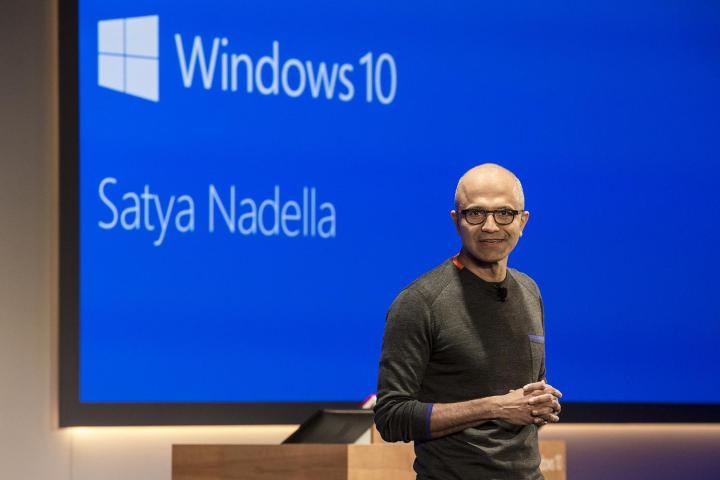
But that’s not the only reason to tune in. It’s always worth hearing both sides of the story, and just reading some of the earnings report before hearing about the brand’s plans and hopes for the future might leave you with the impression everything is peachy over in Redmond. The reality of the situation is that Microsoft is bolstered right now by cloud offerings, and the rise of enterprise sales on the horizon. The Surface devices may be on customers’ minds, but with total revenue of 25.7 billion dollars, for an actual operating income of 7.9 billion, the devices make up a small percentage of Microsoft’s actual earnings.
Here’s everything Microsoft has revealed about its Q2 2016 earnings.
Money talks
It’s important to clarify that we talk about growth or loss in two different forms. One is year over year (YoY), where we simply look at the numbers produced from the same quarter a year before, with some compensation for inflation and other factors. The other is constant currency (CC), which takes into account even more factors such as exchange rates for foreign currency.
The former is the one that’s important for investments and tax purposes. The latter offers a clearer idea of whether the quarter was actually a loss or gain, but Microsoft has a greater influence on the numbers.
Oh, and you might have noticed these earnings are labeled as the second quarter of 2016. That’s because Microsoft has a very odd accounting year. The numbers in fact cover the last three months of 2015.
Services grow quickly, though you might not notice
The heart of Microsoft has always been operating system sales. Despite handing out its latest version to a lot of users for free (200 million active devices are running Windows 10, according to Microsoft) it hasn’t really affected the bottom line of the company. Other services, like the Azure cloud compute platform, are now at the forefront of Redmond’s efforts.
And it shows in the impressive growth of the intelligent cloud and services market in the last year. When all is said and done, server products and cloud service revenue is up 10 percent CC. That’s largely thanks to increased demand for Azure cloud solutions, Microsoft’s cloud solution service. Enterprise solutions on their own are up 16 percent CC, one of the biggest jumps in profit for any of the individual product categories.

The growth here from Microsoft isn’t totally surprising. The cloud services market is expanding quickly. It’s worth noting that all that work hasn’t come cheap. Operating expenses are up 11 percent as well, but with the growth of services revenue, it works out to just a one percent drop in operating income.
While this is exactly the kind of news investors and bankers want to hear, it doesn’t matter much to home users. For that, we have to take a look at Surface.
Surface continues to sell
While it’s not a huge part of Microsoft’s business, everyone is interested in how the new Surface Pro 4 and Surface Book have sold so far.
“Surface is playing an increasing role for us in both consumer and enterprise,” Nadella explains in response to a question, “We created a new category of 2-in-1 where our OEMs are finding success.” But that doesn’t mean the Surface’s existence is saving the PC market – far from it.
In fact, Microsoft continues to stand behind the products as if there is no issue. Many times throughout the call Nadella and Hood both continue to express that they’ve created the 2-in-1 market. In fact, from a non-financial perspective, it feels like an excuse. The Surface Pro 4 and Surface Book aren’t an entirely new category. Microsoft has been at this for awhile.

Still, despite the firmware problems that have plagued the line, Surface revenue is up 29 percent CC. Slowing sales of the Surface Pro 3 balanced out some of the gain made by the Surface Pro 4 and Surface Book launch.
Microsoft doesn’t seem that surprised about the results. CFO Amy Hood put it simply when she said “We did a little better than we had expected in our launches.”
Overall, device sales are down five percent YoY, partially thanks to a steadily declining PC market. That suggests Microsoft is making more money per device than it had in the past, since revenue is up.
Microsoft is quick to clarify that this loss is slower than the market as a whole, but it’s hard to talk about limping profits without mentioning the Lumia phones.
Smartphones
It’s pretty hard to sugarcoat what’s going on the with the Lumia line, but Microsoft is definitely going to try. Sales dove 49 percent year over year, a massive loss that places the Lumia sales at just about one percent of the entire smartphone market. While it would be easy to point to factors like limited app selection, poor choice of handsets, and little to no marketing, Microsoft has another explanation – it’s all good.

Okay, so maybe that wasn’t said, but according to Microsoft, Lumia revenue dropping is right on schedule. Since Microsoft took over Nokia, its cut back drastically on the number and variety of phones being produced. This has led to unsurprisingly slow sales. But just because something was intentional doesn’t make it okay.
It’s by far the largest loss in any market for Microsoft, and when sales in any category drop by half, investors are going to want an answer. At this point it is hard to imagine Windows Phone ever recovering from its slump, as the company continues to deliver sub-par product in this category, and Windows Phone 10 has not impressed.
Conclusion
Despite handing out copies of Windows 10 for free to most of its users, enterprise and cloud solutions are way up. In some ways, Microsoft is making its OS free-to-play, and like games of the same model, is taking advantage of the services people need after install to make money.
It’s clear that the bulk of Microsoft’s business is still the services and enterprise operating system sales. It’s a side of the company that consumers don’t usually see, and is far more important than the Lumia phones, or the Surface sales, or even how many devices are running Windows 10 at the moment.
Of course, a full conversion probably won’t happen tomorrow. This is still the company behind Windows, after all. But there’s reason to think Microsoft’s lack of responsiveness to consumer problems with Surface and Lumia products may be a feature, not a bug.


